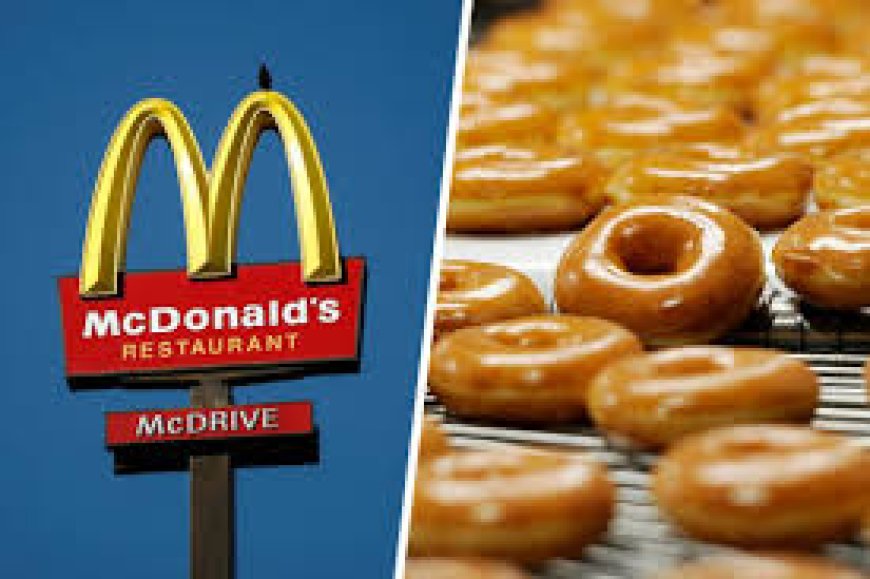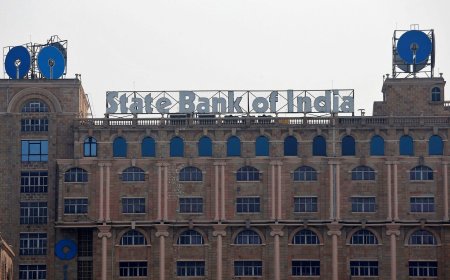McDonald’s and Krispy Kreme call it quits on doughnut partnership after rocky rollout
McDonald’s and Krispy Kreme have ended their doughnut partnership after a limited pilot rollout, citing operational challenges and strategy misalignment. Read the full story.

A Sweet Partnership Sours
In a surprising development for the U.S. quick-service restaurant industry, McDonald's and Krispy Kreme have officially ended their doughnut partnership, which had aimed to test the sale of Krispy Kreme doughnuts at select McDonald's locations. The companies jointly announced on July 3 that they would not move forward with expanding the pilot program, citing operational complexities and a lack of alignment with long-term strategic priorities.
The decision comes less than a year after a highly publicized test phase began in select Kentucky markets, where participating McDonald's restaurants offered three popular Krispy Kreme doughnut varieties: Original Glazed, Chocolate Iced with Sprinkles, and Raspberry Filled.
Why the Collaboration Faltered
While initial consumer response was enthusiastic—leading to long lines and quick sellouts—analysts say supply chain challenges, logistics costs, and brand identity concerns contributed to the termination of the pilot.
“The McDonald’s-Krispy Kreme partnership had promise from a co-branding standpoint, but the model didn’t scale well operationally,” said Kelsey Grant, senior analyst at Morningplate Research. “McDonald’s drive-thru and breakfast business thrives on speed. Adding a third-party pastry product disrupted that balance.”
The two companies attempted to work out a delivery model where fresh Krispy Kreme doughnuts were transported daily to McDonald’s restaurants, but insiders note that distribution inefficiencies and spoilage concerns created persistent challenges.
McDonald’s Refocuses on Core Menu Strategy
In its statement, McDonald’s emphasized that while the test was “a valuable learning experience,” the company is now doubling down on core menu innovation and digital ordering growth, especially in breakfast and coffee segments.
“We're always testing new menu items to provide more delicious options, but any addition must complement our speed of service and simplicity,” said Tariq Hassan, McDonald's Chief Marketing and Customer Experience Officer.
This shift mirrors recent moves by McDonald's to promote in-house baked goods such as the Apple Fritter and Blueberry Muffin under its “McCafé Bakery” banner, as well as the brand's ongoing investment in digital kiosks and AI-driven order systems.
Krispy Kreme Looks Beyond QSR Tie-Ups
For Krispy Kreme, the conclusion of this partnership reflects a pivot away from third-party retail experiments and toward expanding its own branded access points. The company has been rapidly opening fresh shop locations and investing in its "Delivered Fresh Daily" program across grocers and convenience stores.
“While we appreciated the opportunity to work with McDonald's, our focus remains on optimizing our own branded points of access,” said Josh Charlesworth, CEO of Krispy Kreme. “We're seeing strong traction in supermarkets and through our e-commerce and DFD channels.”
Krispy Kreme had already ended a separate retail deal with Walmart in late 2024, reinforcing its pivot toward higher-margin outlets.
Market Reaction: A Mild Pullback
Following the announcement, Krispy Kreme Inc. (DNUT) shares fell around 2.3%, while McDonald’s Corp. (MCD) dipped marginally by 0.4% during the July 3 trading session. Analysts characterized the market response as “muted but expected,” given that the partnership was still in a limited pilot stage and had not been baked into forward earnings estimates.
“This news doesn’t alter our long-term thesis on either company,” said Aaron Fields, equity strategist at Bernstein. “It’s a minor operational experiment that didn’t pan out—not a material driver of revenue.”
What’s Next for Investors?
For McDonald’s, the focus remains on leveraging digital infrastructure and expanding its loyalty program. The company recently announced plans to roll out automated drive-thrus and AI ordering enhancements across U.S. stores by 2026.
Krispy Kreme, meanwhile, has reaffirmed guidance for 2025 revenue of $1.8 billion and plans to add 300 new “DFD doors” by year-end.
“Our long-term goal is to be within 10 minutes of every doughnut lover in America,” said Charlesworth. “That doesn’t require fast-food partnerships—it requires precision logistics and brand ownership.”
While the doughnut dream may have crumbled, both McDonald's and Krispy Kreme appear committed to forging ahead with their respective strategies. The brief experiment offered insights into co-branding complexities in the fast-food ecosystem and underscored the delicate balance between speed, freshness, and scalability.
As the quick-service sector grows increasingly competitive—especially at breakfast—brands will likely focus on streamlining operations and deepening customer engagement rather than entering experimental tie-ups.
What's Your Reaction?
 Like
0
Like
0
 Dislike
0
Dislike
0
 Love
0
Love
0
 Funny
0
Funny
0
 Angry
0
Angry
0
 Sad
0
Sad
0
 Wow
0
Wow
0












































































